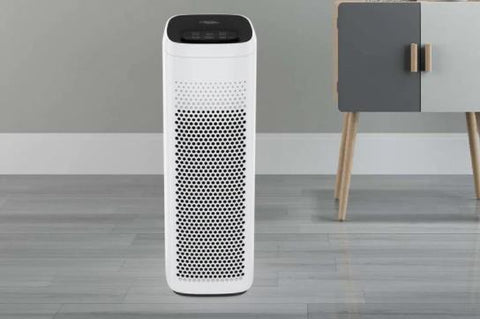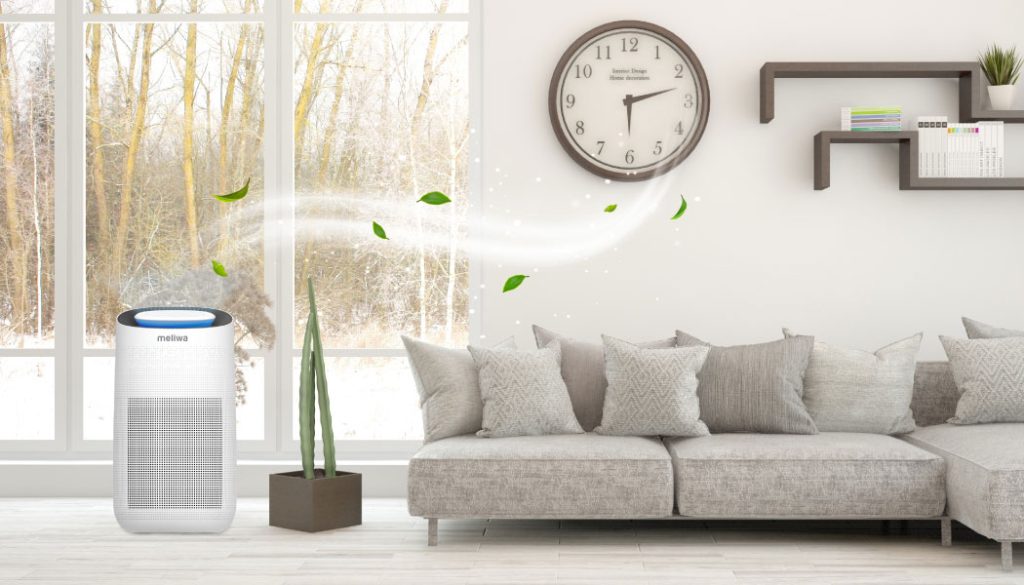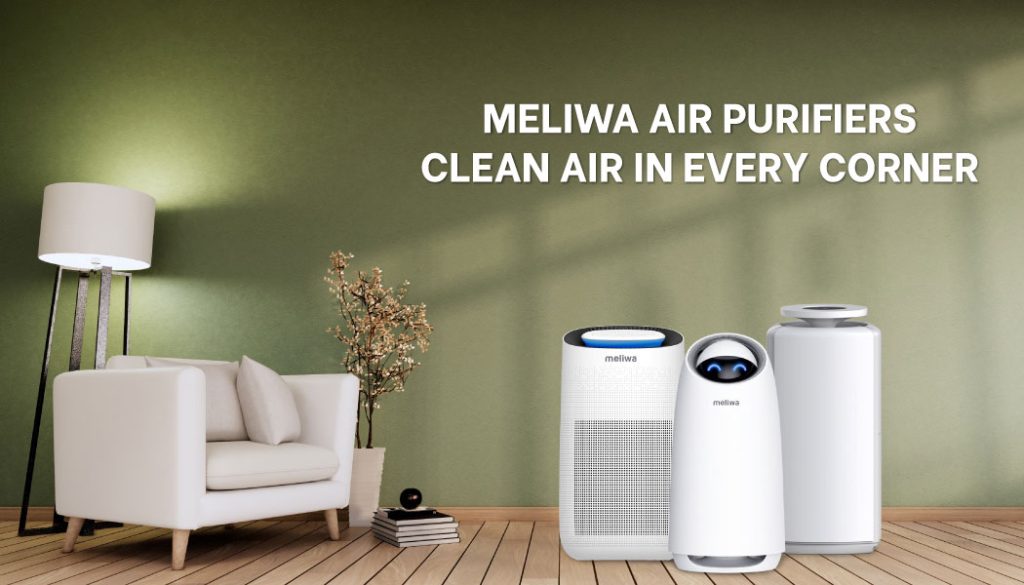Your health and general well-being depend on your home’s air quality being kept in good condition. But how long should your air purifiers run every day to get the best results? This essay will go into this subject to provide you a clear idea of what works best for maintaining clean, fresh air in your home because it is a frequent problem shared by many individuals. So, if you’re interested in learning how to improve the quality of the air you breathe, keep reading to learn the perfect time to operate your air purifier and create a safe environment for you and your family.

Factors to Consider
Size of the Room
Your air purifier’s runtime is greatly influenced by the size of the room. You might need to operate air purifiers for longer to attain the target air quality in bigger rooms because they are likely to have more air contaminants. The size of the room should be taken into account when choosing the ideal runtime.
Level of Contaminants
The length of time your air purifiers runs also depends on the quantity of airborne contaminants. You might need to run the purifier for a longer period of time to filter the air properly if you live in a high-pollution location or have habits like smoking or owning pets that increase indoor pollution. Determine the required runtime by identifying the pollutants in your environment.
Air Quality Goals
How long you should leave your air purifier running depends depend on your individual air quality objectives. Running air purifiers for a few hours each day may be sufficient to maintain good air quality. To get the required air quality, the purifier might need to run constantly or for extended periods of time if you have respiratory problems, allergies, or other health conditions.
Air Purifiers Efficiency
Clean Air Delivery Rate (CADR)
The Clean Air Delivery Rate (CADR) gauges how well an air purifier can eliminate airborne impurities. The CADR rating must be taken into account when estimating air purifiers operating time. Higher CADR ratings signify an air purifier that is more effective and can eliminate impurities more quickly, potentially reducing the required runtime.
Air Changes per Hour (ACH)
Another crucial aspect to take into account when estimating your air purifier’s endurance is the Air Changes per Hour (ACH). The term “ACH” describes how many times an air purifiers can totally filter a room’s air in a single hour. A faster air purifiers may clean the space, requiring less runtime, if the ACH value is higher.
Filter Types
Filters of many kinds, including HEPA filters, activated carbon filters, and electrostatic filters, are used in various sorts of air purifiers. The longevity and effectiveness of each type of filter in eliminating particular pollutants varies. You can determine the runtime necessary to maintain good air quality by knowing the type of filter and how effective it is.
Recommended Minimum Runtime
Manufacturer Guidelines
The manufacturer’s instructions should be one of your first stops when establishing the runtime of your air purifier. Manufacturers frequently offer suggestions for the shortest period air purifiers should be used in order to get the best benefits. These guidelines are a useful source of knowledge because they take into account the unique characteristics and capacities of the purifier.
General Recommendations
When choosing the ideal runtime, there are some general recommendations to take into account in the absence of particular manufacturer specifications. The 8–12 hours per day that are typically advised will allow for thorough air filtering without using an excessive amount of energy. The size of the space, the amount of contaminants present, and the desired air quality may all be adjusted.
Optimal Runtime for Specific Situations
High Pollutant Levels
You may need to run your air purifier continuously or for extended periods of time if you reside in a location with high pollution levels or have major interior sources of pollutants, such as construction or renovation projects. In spite of high pollution levels, this will assist in continuously filtering the air and maintaining optimum air quality.
Allergies and Asthma
Higher air quality requirements are frequently necessary for those with allergies or asthma to reduce their symptoms. Long-term use of air purifiers, particularly during the worst allergy seasons, can help eliminate allergens from the air and bring about relief. For maximum comfort, the runtime must be adjusted based on individual requirements and symptom monitoring.
Pet Owners
Pet dander, fur, and odors are common problems for pet owners and can affect the interior air quality. Running air purifiers for a few hours each day can help get rid of these pet-related pollutants and keep the environment cleaner, especially in places where pets spend the majority of their time. Efficiency can be improved by adjusting the runtime based on the number of pets and their shedding habits.
Smoking Indoors
Smoking inside contributes significantly to the air pollution, which includes secondhand smoke and dangerous substances. It is strongly advised to run air purifiers continuously or for a long period of time if smoking happens indoors in order to eliminate the smoke particles and enhance the quality of the indoor environment. The air purifier should be used in conjunction with proper ventilation.

Balancing Energy Consumption
Energy Efficiency
When deciding how long your air purifier will run, energy efficiency is a crucial factor. Choose air purifiers with high energy efficiency ratings and energy-saving features. This will ensure efficient air purification while reducing energy consumption. A excellent place to start is by selecting an ENERGY STAR certified model.
Programmable Timer
Numerous air purifiers have programmable timer functions that let you select particular runtimes in accordance with your routine. By just using air purifiers when necessary, such as while you are sleeping or away from home, you can save electricity. By using the customizable timer option, you can balance your energy usage and air purification.
Adjusting Runtime
If you need to modify the duration of your air purifier, you may do so by keeping an eye on the air quality in your surroundings. You might be able to shorten the runtime to save energy if you detect an improvement in air quality after a particular runtime period. To maintain good air quality, however, a longer duration may be necessary if the air quality is still bad.
Impact of Location
Proximity to Pollution Sources
The length of time that your air purifier operates depends on how close it is to sources of pollution like industrial locations, busy roads, or construction sites. If you live near these sources, you might need to operate the purifier for longer periods of time to counteract the greater amount of pollutants that are getting into your indoor environment.
Indoor vs Outdoor Air Quality
Your air purifier’s runtime may vary depending on the difference in interior and outside air quality. Run air purifiers more regularly to get rid of contaminants that have entered your home area if the external air quality is bad. Better air quality can be maintained by monitoring outdoor air quality indices and modifying inside air purifiers runtime accordingly.
Open vs Closed Windows
Your windows’ open or closed status can affect how long your air purifier runs. Open windows allow external pollutants to enter, necessitating the continual or extended use of air purifiers. On the other hand, closed windows lessen the amount of outdoor contaminants that enter, possibly allowing for a shorter and more effective runtime.

Maintenance Considerations
Filter Replacement
The effective operation of your air purifier depends on routine filter change. Filters that are clogged or unclean might restrict airflow and lessen the purifier’s efficacy. To maintain the optimum level of air quality, heed the manufacturer’s recommendations for filter replacement intervals and be sure to replace filters on schedule. Filter replacement oversight might result in decreased purifier effectiveness and increased runtime needs.
Cleaning the Unit
Regular cleaning of the air purifier contributes to maintaining its functionality and extending its life. On the surface and around vents, dust and debris can gather, obstructing airflow and decreasing effectiveness. When cleaning the appliance, make sure to thoroughly clean all of its parts, including the pre-filter, HEPA filter, and carbon filter, if necessary. Cleanliness aids in improved speed and runtime optimization.
Regular Inspection
Check your air purifier frequently for any indications of wear, damage, or malfunction. Look for faulty connections, odd noises, or a decline in performance. Any difficulties should be resolved as soon as possible to avoid extended runtime requirements owing to decreased operating efficiency. A reliable and efficient air purifier system benefits from routine inspection and maintenance.
Monitoring Air Quality
Air Quality Sensors
A few cutting-edge air purifiers have built-in air quality sensors. These sensors keep an eye on the quantity of airborne contaminants and modify the purifier’s operation as necessary. You can establish the runtime necessary to maintain good air quality by monitoring the air quality sensors. Utilize this option to reduce the amount of energy your air purifier uses when running.
Smart Features
Smart air purifier features give you more convenience and control over how the device works. These features might include Wi-Fi connectivity, smartphone apps, and remote control functionality. Smart features make it simpler to maintain optimum air quality without sacrificing energy savings by allowing you to monitor and change the runtime of your air purifier from anywhere.
Integration with Smart Home Systems
Consider purchasing an air purifier that is compatible with your smart home system if you have one. Automation can be set up depending on occupancy patterns, air quality criteria, or certain timetables thanks to integration. With the aid of this integration, you can ensure that your air purifier’s runtime fits with your daily schedule and air quality objectives without having to continuously monitor and make modifications.

Personal Preferences
Noise Levels
When deciding how long your air purifier will run, take into account your tolerance for noise. Some air purifiers make audible noise while functioning, which can be bothersome, especially when it’s quiet or when people are trying to sleep. If noise is an issue, change the runtime to correspond with times when noise is less distracting, or think about buying a quieter air purifier type.
Sleep Considerations
It’s crucial to take into account runtime throughout the sleeping hours for bedrooms. While you sleep, running the air purifier can help maintain healthy air quality. Consider models with low noise levels or make use of the sleep mode function offered by some air purifiers. The maintenance of a cleaner, healthier sleeping environment can enhance general wellbeing.
Occupancy Patterns
You may choose the air purifier runtime by looking at your occupancy trends. The runtime should be adjusted based on when you spend the most time in each room. While reducing runtime during times of lower occupancy might help save energy, running the purifier for longer periods when the room is often inhabited can assist provide a continuously clean air environment.
Seeking Professional Advice
Consulting an Indoor Air Quality Expert
Consult an indoor air quality specialist if you have particular worries or unusual indoor air quality problems. They can evaluate your particular scenario, suggest the best air purifier, and offer runtime advice depending on your requirements. Professional guidance can guarantee the best air purification outcomes and address any unique problems you might be having.
Recommendations: Dayette Air Purifier

